Jandial Temple
Taxila, which has many Buddhist sites, is regarded as the birthplace of Buddhist civilization. But few people know that the Jandial Temple, a Zoroastrian temple, is located in the center of the great Buddhist society. The structure, modeled after the Classical temples of ancient Greece, has a central shrine surrounded by four Ionic columns, a walkway, a back room, an entrance hall, and a veranda. You can still see the Jundial ruins Near Taxila, about 40 kilometers from the federal capital of Islamabad.
If you’re lucky enough to visit Jandial Temple Taxila, take some time to explore its fascinating history and architecture.
History of Jandial Temple
Only one Greek temple existed on the subcontinent, Jandial, located 700 meters north of Sirkap North-gate. The Greeks from Bactria built it in the middle of the second century BC, and the earthquake in 30 AD destroyed it. Under the direction of John Marshall, the Archaeological Survey of India excavated the Temple in 1912–1913. It is the most Hellenic building ever discovered in Pakistan. Philostratus mentioned this Temple in his Life of Apollonius of Tyana, which may have been built during the Scythia-Parthian period. According to A.G. Lone, a former curator of the Taxila Museum, Philostratus may have been referring to this Temple when he said, “They has seen, a temple in front of the wall, about 100 feet tall and constructed of shell-like stone. There were obvious tablets that showed the exploits of Porus and Alexander.”
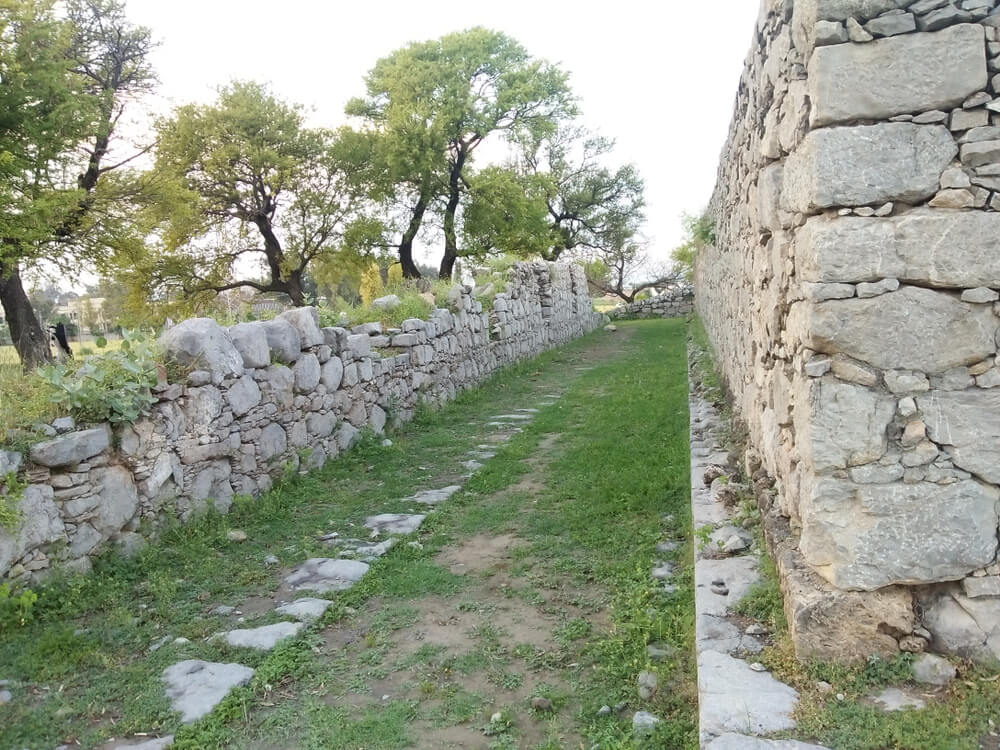
Due to its importance as the only ancient Parsi Temple in South Asia and its striking Greek features, UNESCO listed the Jandial Temple on the World Heritage List in 1980. Sadly, no one has taken any significant steps toward its rehabilitation.
Structure of Jundial Temple Taxila
A front porch with four Ionic columns supporting it opens up to an antechamber. The sanctuary, where statues of various Greek gods stood on a platform, was separated from the antechamber by a large door made of wood and iron. You can see a tower foundation deep enough to support a tower 13 meters tall behind the sanctuary as a solid masonry mass. A back porch was to one side of the building, and a typical Greek-style peristyle surrounded the Temple. The Jandial Temple’s layout exhibits two variations: A 20-window wall supported the Temple’s roof because Taxila lacked the appropriate stone for a Greek colonnade.
Architechture of Jandial Temple
The Jandial Temple’s Ionic capitals resemble the Ionic Temple of Artemis in Ephesus in a more rustic and austere way. This Temple bears a striking resemblance to classical Greek temples. The Temple’s structure consists of limestone and Kanjur, with plaster on the façade that is still intact in some places. In Gandhara, people used a sedimentary stone known as “Kanjur.” They used Massive sandstone blocks to construct some large columns and pillars. However, the wall moldings and the bases’ design are pretty simple. The drums are also expertly joined together with dowels. All of this points to work that may have been carried out by Greeks directly or with Greek supervision. The Jandial Temple Taxila regards as a temple in a semi-Classical style. Its structure resembles a Greek temple, with pronaos, naos, and opisthodomos at the back. In antis design, two anta walls encircle two Ionic columns in front of a Greek distyle. The Temple appeared to have an exterior wall with windows or doorways, with a design resembling a Greek row of columns encircling it. The Temple was roughly 45 by 30 meters in size.
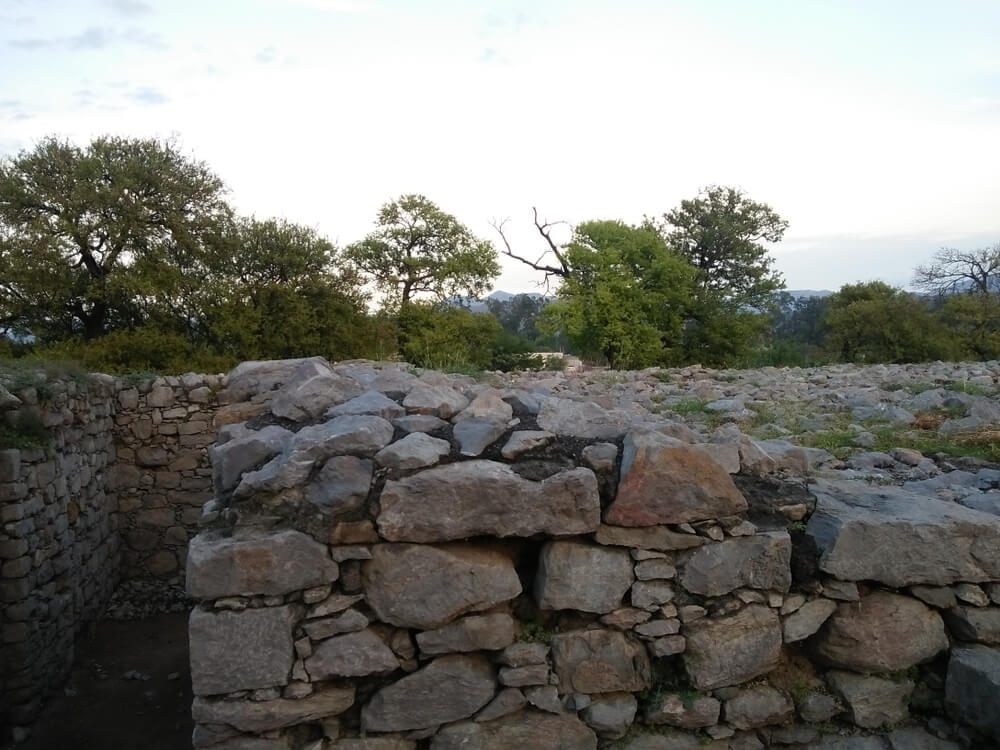
Except for a pillar in Ahin Posh, which resembles a more Parthian than a truly Hellenistic structure, this Ionic style is uncommon outside of the capital city of Pataliputra in the Indian subcontinent. It seems to have been entirely replaced by the abundance of Corinthian art found in the Indo-Corinthian capitals of Gandhara as the direct Greek presence in India declined.
When was the Jandial Temple built?
Perhaps in the second century BCE, the Greeks constructed the Temple (Indo-Greeks). Due to the Temple’s precise alignment with Sirkap suggests its construction during the Greek city’s initial period of occupation, and a Greek architect with origins in Asia Minor may design it. Conversely, The Indo-Parthians may have built it in the first century BCE to practice the Zoroastrian religion, possibly after they invaded Hellenistic lands, with the aid of Greek labor and knowledge. A Greek envoy’s dedication to Garuda on the Heliodorus pillar in Besnagar is an example of how easily Greeks followed other religions in India. It may be the work of a Greek Zoroastrian devotee.
In the Jandial ruins, a coin belonging to the Indo-Scythian king Azes 1 was discovered, indicating that the building was in place during his rule.
Attractions at Jandial Temple
When you visit Jandial Temple Taxila, check out the unique attractions it has to offer! The Jandial ruins are a sight to behold, with their intricate carvings and beautiful architecture.
Exhibits of Ancient Ruins of Civilization
The ruins of the Jandial Temple Taxila are a wonder to behold. This ancient Temple is a testimony to the magnificent achievements of the ancient world. The exhibits here are a veritable treasure trove of information about the ancient civilizations that once graced this land. You can see the remains of majestic temples and artifacts that provide a glimpse into the everyday lives of these people.
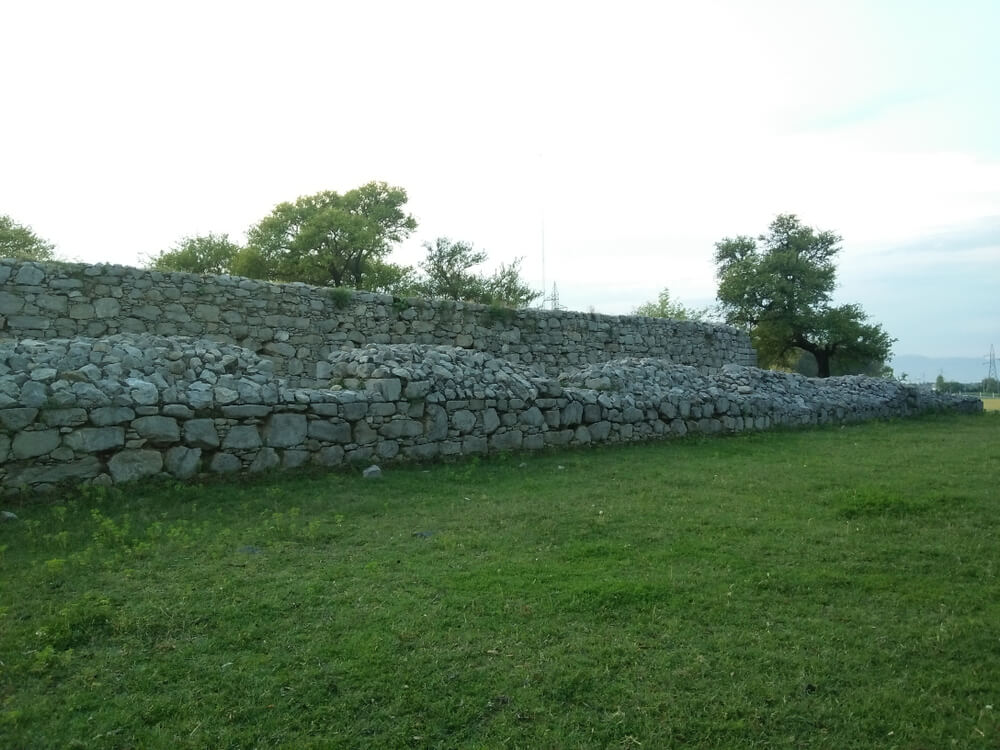
It is truly awe-inspiring to stand in these ancient relics’ presence and imagine all they represent. If you’re interested in history and archeology, then this is a place you won’t want to miss!
Greek Style Stairs
A flight of stairs behind the main building leads to a platform where a Parthian fire sanctuary most likely stood in the first century BC. This large wall with stairs inside the Jandial Temple Taxila has led some authors to speculate that it was built to support a ziggurat similar to those found in Zoroastrian or Magian temples. This wall locates between the naos and the opisthodomos. As you climb the imposing Greek-style stairs of the Jandial Temple Taxila, you can’t help but be in awe of the ancient wonder that lies before you.
Strong and Wide Walls of Temple
The Jandial Temple Taxila is an incredible sight to behold! It’s hard to imagine that this majestic Temple dated back over two thousand years ago, and its walls still stand tall and strong. The walls are solid and broad; they seem like they can withstand anything. It’s incredible to think about all the history that took place here. This Temple was at the center of a bustling city and was a vital part of the everyday life of people there. To be able to walk in the footsteps of those ancient people and experience their culture first-hand is truly special.
Large Porch
The porch of the Jandial Temple is quite large, extending almost the entire building length. It’s a beautiful sight with intricately carved pillars and graceful sculpture, but it’s more than just a pretty face. The porch was designed as a space for ritual performances and processions and is the entrance to the Temple.
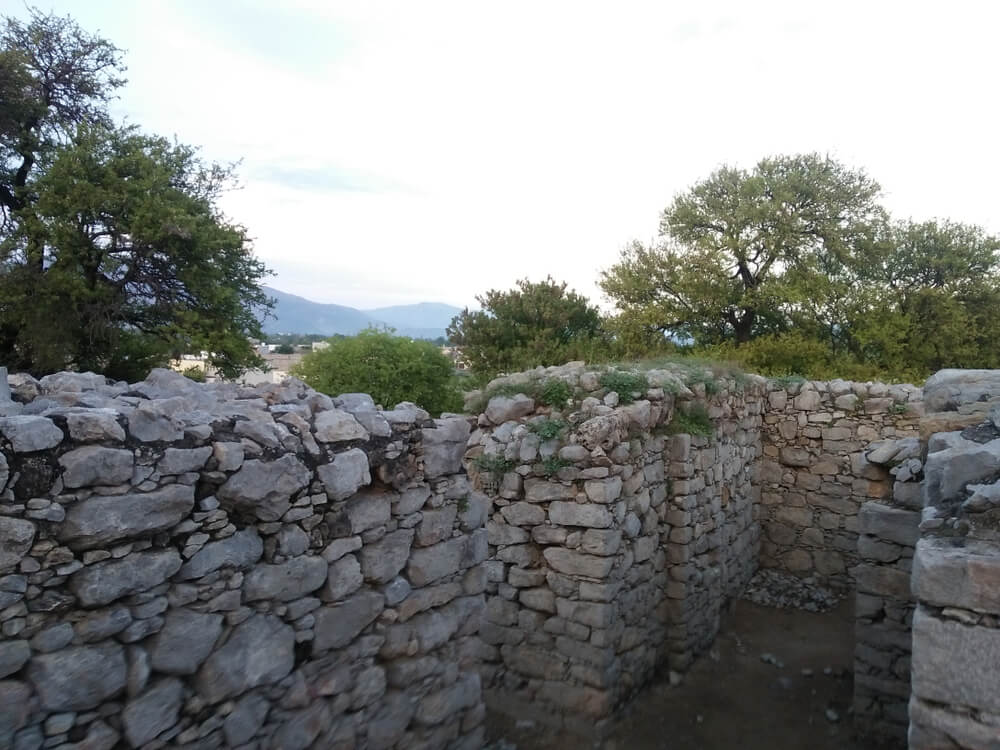
Central Shrine with Four Ionic Columns
The central shrine at Jandial Temple Taxila is an awe-inspiring sight. The Temple’s primary structure consists of the main shrine supported by four ionic columns and a porch. The first shrine has a rectangular floor plan and solid masonry walls with perforated window openings, which oddly heightens the architectural spell.
Jandial D
The foundations of a second temple, Jandial D, possibly constructed in the second century BCE by the Greeks, were also unearthed on a different mound (Mound D), a little to the west of Jandial, in 1863–1864. The front porch of the Temple, whose layout is very similar to Jandial’s, was a sizable 58 feet in length. The ancient road leading to Gandhara likely ran between Jandial and Jandial D.
Where is Jandial Temple located?
Jandial Temple Taxila with Ionic columns once stood at Jandial, which is close to Taxila in Pakistan. From Sirkap’s northern gate, the Temple is 630 meters to the north. A small road to the left of the UET Taxila Main Gate leads to the Jandial Temple, encircled by fields and homes.
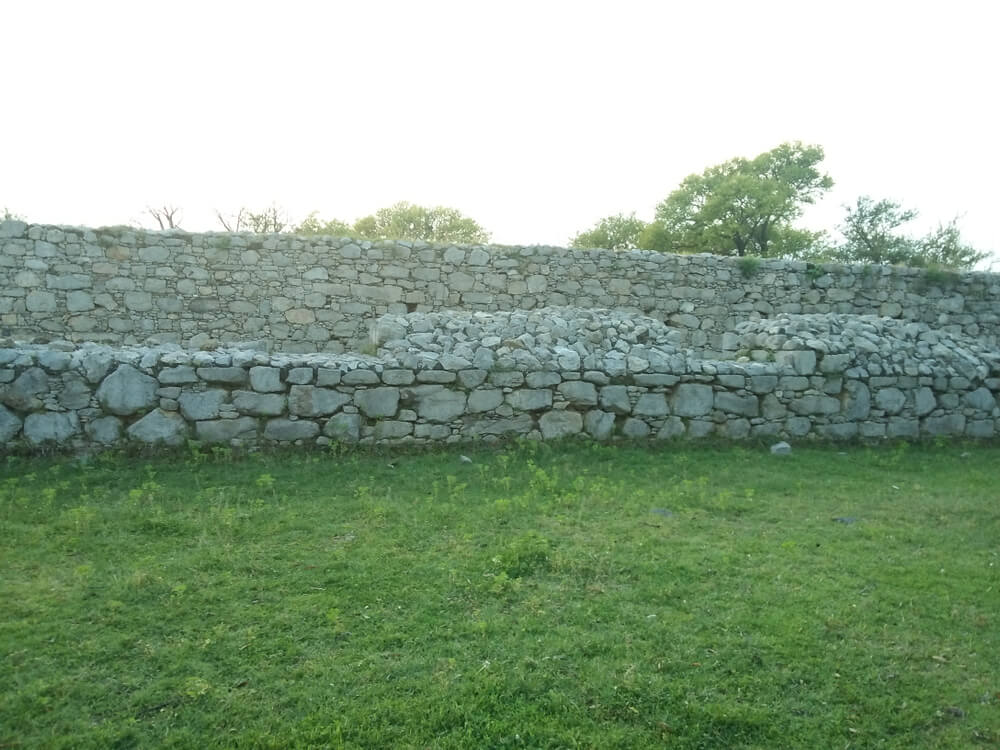
Jandial Temple Timings & Visiting Days
The best time to visit Jandial ruins is during the morning when you can enjoy the peaceful atmosphere and take in all the beautiful details of the Temple. It’s open from 9:00 AM to 4:00 PM every day, so be sure to put it on your list of things to see next time you’re in Pakistan!
Frequently Asked Questions
How old is Jandial Temple?
The Jandial Temple Taxila is almost 2000 years old. Alexander the Great’s forces arrived in Taxila when he came to this region; many of their soldiers chose to marry and settle there. The Jandial Temple is one of the many structures they created.
Who can Visit Jandial Temple?
You can visit Jandial Temple Taxila! As one of Pakistan’s most popular tourist destinations, the Temple sees thousands of visitors annually. The Temple is open to the public from sunrise to sunset, and there is no admission fee. If you’re interested in visiting Jandial Temple, we recommend taking a guided tour. The Temple is significant, and there is a lot to see, so it’s helpful to have a guide who can point out the essential features. There are many tour operators in Taxila, so you should be able to find one that suits your needs. When planning your visit, remember that the weather in Taxila can be scorching during the summer months. The best time to visit is from September to April when the temperatures are more moderate.
Conclusion
Taxila is the birthplace of Buddhist civilization and is home to many ruins and artifacts. However, a strange Zoroastrian temple is located in the heart of Buddhist Civilization. As a result, the Jandial Temple is growing in recognition and catching people’s attention among those interested in prehistoric culture. The Jandial Temple is a prime example of wonderful craziness.
If you’re ever in the Punjab province of Pakistan, visit the Jandial Temple Taxila – the ancient world wonders you won’t miss. It concludes our tour of the Jandial Temple Taxila. We hope you enjoyed learning about this beautiful old site and its rich history. So explore the past and learn everything you can about this magnificent Temple and the culture that constructed it.
